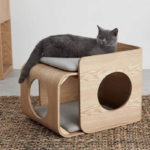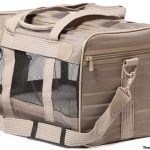Buying as a hamster cage can be pricey – and some of what you buy may not benefit the hamster or you at all. There are designs on the market now featuring layered stackable levels, tunnels, brightly colored plastics – but are they worth it? His article aims to explore hamster’s health needs for housing, those funky cages with tubes everywhere, and your needs for healthy cage hygiene. With a checklist of sensible tips, you should find your purchase decision that bit easier and avoid wasting money on a harmful design.
Hamsters, Homes, and Health Problems
Hamsters can get respiratory illnesses, such as the common cold, from people. Plastic or glass tanks can perhaps help cut this down. On the other hand, bars with wires may help dental health. Hamsters need to gnaw to keep their teeth in check, as they constantly grow and bars can help them here. Modular plastic housing may look great, but it must be roomy enough – they run in the wild for around 11 km a day. It can also be more difficult to clean than a wire cage with a plastic bottom. Look for a design that has plenty of space and scrutinize those funky designs very carefully are pitifully small, which brings us onto those plastic tubes sprouting out from the sides of them.
Plastic Tubes – Are They Worth The Money?
Hamsters have an instinct to hideaway. Some designs feature brightly colored plastic tubes but you have to consider if they doing the hamster much good for your dollars or pounds. If the tunnel surfaces are too smooth, they will be discouraged – and do they move freely around the house via the tube, or end up often in just one area? Is the overall ventilation adequate? Tunnels can be great but not if they’re too slippery, steep, narrow, or airless. You also need to consider how you’re going to clean the cage regularly.
Cleaning The Cage
Tidy the cage daily – removed soiled bedding and discarded food. You also need to wash it thoroughly once a week, with your hamster safely housed elsewhere for the duration. Are plastic tunnels easy to clean inside to remove urine traces and perhaps droppings or food bits? Does the cage come apart fully and easily for cleaning? If the process is too time consuming or it won’t come apart properly, the cage is not worth your money.
The essential features are quite simple. Plenty of space, areas they can use without getting caught or stuck in one part of the cage, and easy access through tidying and cleaning. It also needs to accommodate a drip-feed water bottle for constant freshwater, a solid exercise wheel (ones which are fixed to the side not somehow suspended are thought safest), and a nesting box are for sleeping. With these features in mind, you should be able to discern which cages are built just for an eye-catching appearance and which will give your hamster a healthy and happy home.











